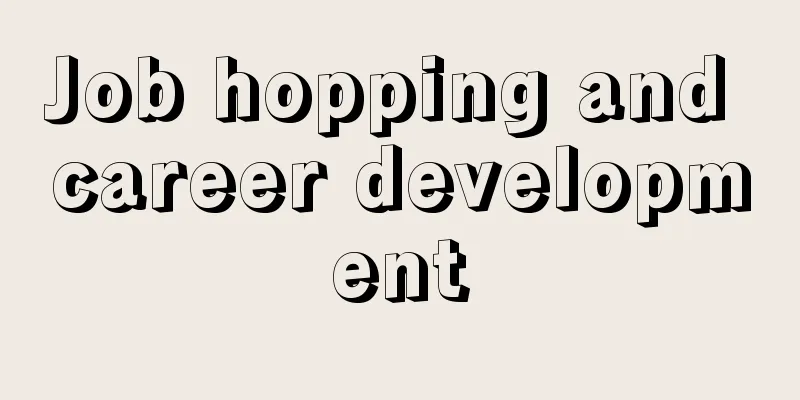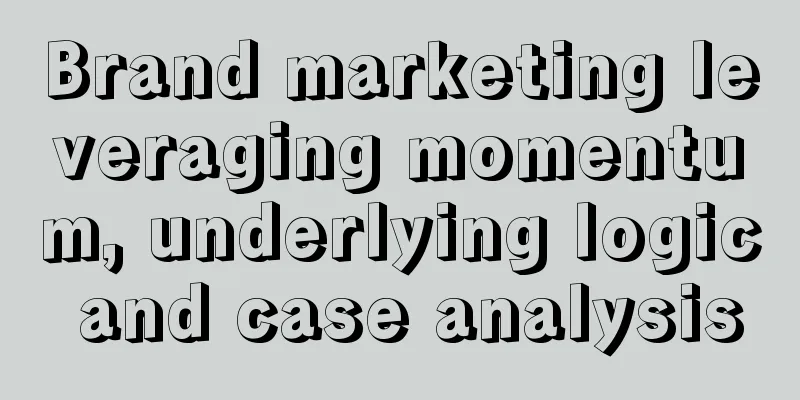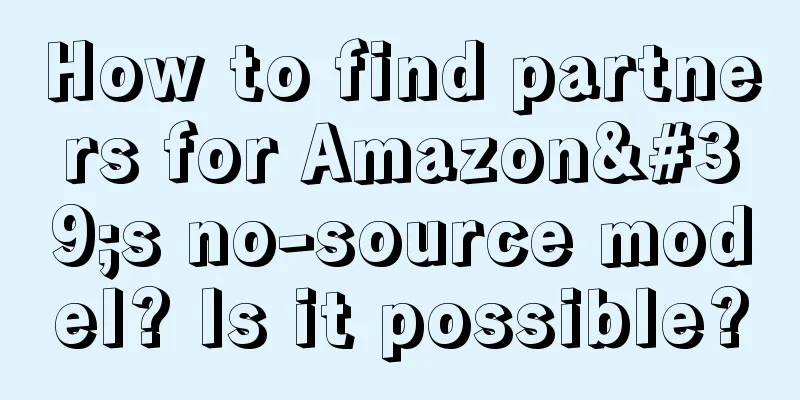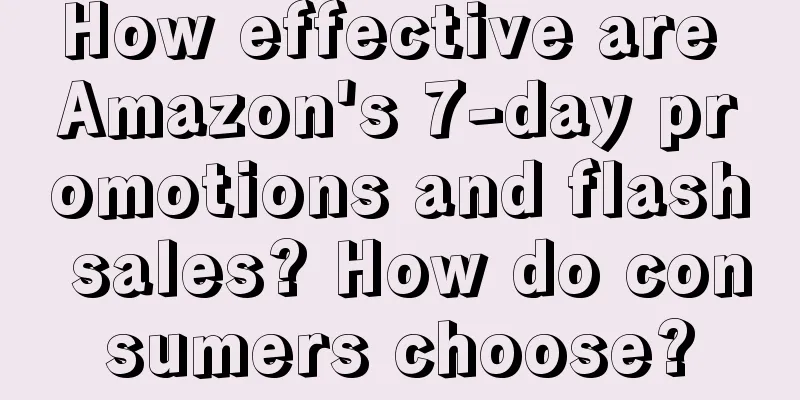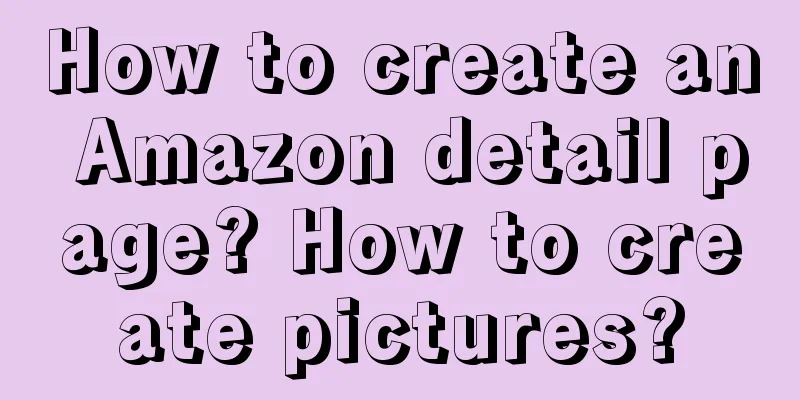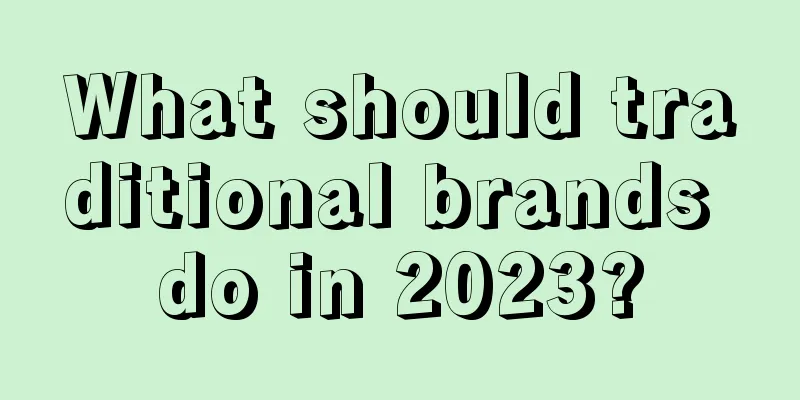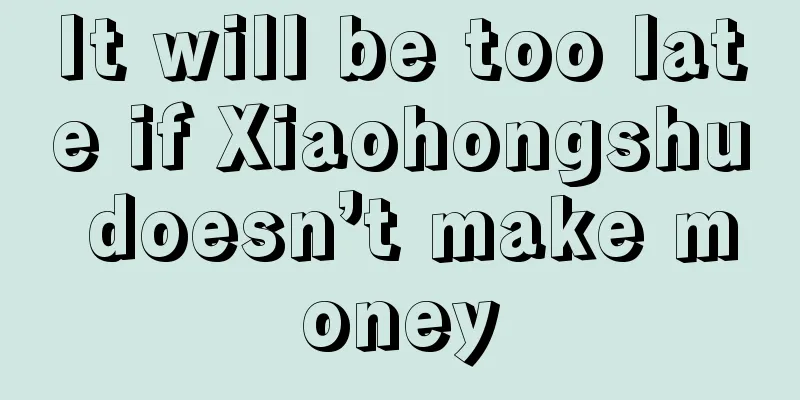Three copywriting methods to gain insight into users’ hearts
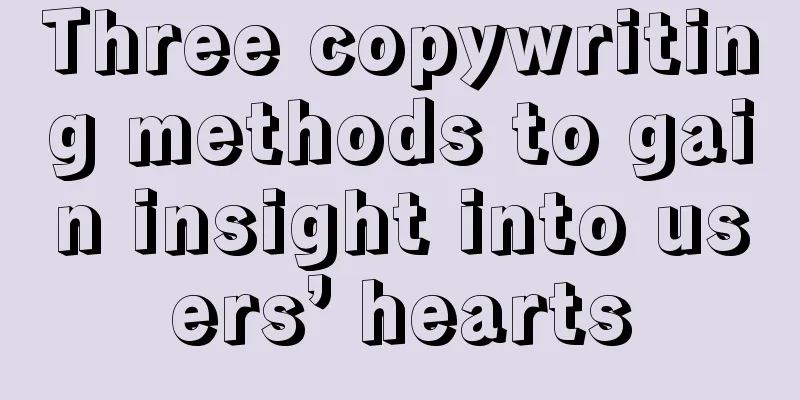
How are those copywritings that touch people's hearts, resonate with them, make them think deeply, or make them make decisions after reading written?
Why are these top copywriters always able to have a deep insight into people's hearts, and how do they develop their copywriting skills? The common view of many people is: You must have talent, you have to keep writing, keep learning, and practice, in order to become a copywriting master or a copywriting god! Well, it sounds like it makes sense. But in fact, it is correct nonsense. First of all, this sentence itself cannot bring any enlightenment or value to people. What is the standard of talent? What is the extent of continuous writing and learning? How to practice? Are there any precautions for practice? (Actually, everyone understands the truth of this statement, but how to do it specifically?) Secondly, it is applicable to the other 95% of industries, because if you replace "copywriting" with "electronic engineering" or "civil engineering", it will also be applicable. In other words, it is useless. So, how to become a copywriting expert? Is there a slightly faster and more scientific method that can help even a novice copywriter find the path to becoming an expert? In my opinion, excellent copywriting is produced in this way: 5% depends on inspiration, 50% depends on the underlying training logic, and the remaining 45% depends on continuous training and accumulation! There is a correct training method to quickly become a copywriting expert. Today, I would like to share the underlying logic of that 50%. Before I start explaining these three arousal methods, I would like to ask you to think about a question first: If you are a copywriter, after writing many articles and posters, do you know what type of copywriter you are? How do you tell what type of copywriter you are? Let’s first look at the following group of copywriters: (Copy 1) (Copy 2) (Copy three) (Copy 4) There are two general roles for copywriting:
The sign of a master copywriter is often that your copy can achieve the second effect. Let’s talk about the previous four sets of copywriting. What do you feel as a viewer after reading these four sets of copywriting? I believe that most people will feel that it is high-end, classy, luxurious, high-profile and meaningful after watching it. However, it is difficult for them to take follow-up actions (such as calling for consultation or paying for purchase). If the copy you usually write belongs to this type, then you are a "self-entertainment" copywriter. 1. “Self-entertainment” copywritingWhat is self-congratulatory copywriting?
Let’s look at another set of texts: (Copy 1) (Copy 2) (Copy three) After reading the following set of texts, what do you feel? I think most people will feel touched and have a ripple in their hearts. (Some people may be thoughtful or remember the content of the copy.) If you typically write content of this type, then you are a “user-oriented” copywriter. 2. “User-oriented” copywritingWhat is “user-type” copywriting? I define it as: "Standing in the reader's perspective, arousing certain emotions or desires in the reader, or prompting the reader to take action!" So are there any advantages and disadvantages between the two? I think there is no difference between good and bad copywriting, only whether it is suitable or not. How do you understand this? I mentioned earlier that the two functions of copywriting are to spread the word and to stir emotions or trigger actions. The former is simpler but has a smaller effect, while the latter is more difficult and has a greater effect. For example, it can greatly improve the efficiency of advertising copy (to encourage consumers to buy), increase revenue (for example, a 100-yuan advertisement can increase 10,000 new user registrations), and increase brand awareness (such as Durex's joke copy). In short, under the premise of limited resources or funds, user-oriented copywriting is undoubtedly the best choice to maximize the benefits of resources as much as possible! So, how can we write user-oriented copy? Let's first understand the final presentation environment of the copy: one is to have a sufficient presentation atmosphere. For example, the subway copy of NetEase Cloud. In fact, in this environment, all audiences are surrounded, your copy can be fully displayed to readers, and readers also have plenty of time to read and accept your information. But the only drawback is that it is too expensive. Not everyone has the money to spend on advertising like this. The second presentation environment, which is the case in most cases, is that you will be placed together with numerous advertising copies, and readers will be dazzled. At this time, readers cannot have the presentation atmosphere of a private room like the one mentioned above by NetEase Cloud Music. Whether you can be remembered, seen, and finally obtained depends on whether you can be "a little green among thousands of flowers" or "you are the only one who gives me the most special feeling among the vast sea of people" and thus be discovered! Just imagine that you are watching videos or checking your Moments every day. Why do you stop scrolling and read a certain video or text carefully? It must be because it attracted you! Therefore, the first basic skill of top copywriting is to arouse the reader's emotions and thus capture his attention! There are three ways to arouse readers' emotions and grab their attention:
1. Calling CognitionWhat is cognition? Simply put, it is what a person already has in his mind. When you say it, he can remember it immediately without spending too much energy to accept, digest and understand it. This is equivalent to the knee jerk reflex. As long as you tap the knee ligament of a normal person, his leg will automatically kick upwards, which is what we call a conditioned reflex. The sources of cognition usually include: culture, knowledge, experience, impression, etc. Remember Copy 1 from the second set of copywriting? Let’s break it down now and you will understand why it touches people’s hearts and triggers readers’ emotions. Let’s first look at the overall structure of the copy:
Emotions evoked: The feeling of struggle. No matter you are middle-aged or young, as long as you are away from home and come to this city to work hard, you will always think of your youthful years or the time when you were working hard. Years of hard work and struggle are just to achieve some results in this city or to be able to gain a foothold here.
Ignite emotions: the feeling of gap. If after spending many years in this city, there is no result, or no success, or no firm foothold, won't those years of youth turn into a wisp of dust and disappear in the wind?
The final emotion that the overall copy and accompanying pictures will trigger: a huge sense of psychological gap. Finally, we can judge that the task of this copy is to evoke your sense of psychological gap. When this emotion is evoked, next, you will think about doing something to retain your youth, or do something to prove that your years of hard work in this city have not been in vain. So what is the solution? One of the most effective ways is to buy a house! Buying a house can prove that you have established yourself in this city and become a modern urbanite! This can effectively make up for the psychological gap! Therefore, this advertisement is most likely a real estate advertisement! Let’s review the copywriting method we mentioned, which is to call on cognition. This copy calls on the audience’s cognition that “buying a house is the way to take root and succeed”. “Buying a house” can effectively make up for the psychological gap. Next, we will analyze the second copy of copywriting group 2. First look at the overall structure:
Emotions evoked: Can't help but remind people of how their father helped them and expresses their father's love.
At the same time, by establishing a connection between dad and the house, dad can also bring a sense of security to his children (establishing a connection between fatherly love and a sense of security). At this point, the emotion that the entire copy wants to express is: Dad is the strong backing of every child and can protect his children from wind and rain. Do you remember how your father expressed his fatherly love? Therefore, we can judge that the task of this copy is to arouse your deep love for your father's love and gratitude! From this, we can judge that this copy may be a copy for Father's Day. At the same time, we can compare self-entertainment type and user-oriented copywriting. VS You can find that, in comparison between the two, the latter can touch people's hearts, while the former leaves people unmoved. Why is this so? We can break down the former copywriting: "luxury collection, glory", "unseen vision", "grand view", these copywritings all have one thing in common: summary words. They are too vague and abstract to evoke any effective cognition in people's minds. You can think about it in your mind now, what exactly is "luxury collection", "unseen vision", "grand view"? It can be everything, or it can be nothing. In short, it is too vague! But humans are lazy animals. They would rather lie down than stand up. What's more, when seeing these feelingless copywriting, if they cannot associate it with anything in an instant and it does not evoke any emotions, the audience will give up directly. "Instead of spending time reading such meaningless copywriting and wasting brain cells, wouldn't it be better to watch two more videos?" A lot of advertising money is wasted this way. I mentioned earlier that excellent copywriting consists of 5% talent, 50% training methods, and 45% practice. So, let’s use the “calling cognition” method just mentioned to train: How to explain to people what “cognition” is in one sentence? If you search Baidu for the definition of cognition, you may get this explanation: This explanation is very scientific, very accurate, and very detailed, but to some extent, it is also equivalent to self-congratulatory copywriting. So I changed it to: What is cognition? Cognition is the books you have read, the wine you have drunk, the roads you have walked, the sea you have seen, the people you have loved, the sky and white clouds you have seen, which combine to form your personality and your attitude towards the world. Comparing Baidu Encyclopedia's explanation of "cognition" with my explanation of "cognition", I think the latter should be easier to understand and remember. When you want to grab readers' attention by evoking emotions, you should think: What cognition do I want to call on readers? What kind of cognition will readers evoke when they see my copy? Is this cognition what I want? 2. Arouse emotionsThe next method I want to talk about is to evoke emotions. Why do we need to evoke emotions? Because biologically speaking, humans are naturally more emotional than rational, and we can gain a deeper understanding of this from many real-life cases. For example, take love. I tried to look at it from a biological perspective. The characteristics of love are that a man and a woman have a liking for each other, then are attracted to each other, finally get married, get married, have children, and finally live together until they grow old, until they are buried underground together. If we look at it from the surface, that is, from a rational perspective: on the surface, love seems to be a man and a woman, reproducing offspring (for most people) and staying together for life. If that’s the case, then any man and any woman will do, right? But why are there still many people who are so picky, giving reasons like "I'd rather be alone than have something unsuitable" or "He's not my type"? Because most humans will make choices based on emotion: when two people are together, they are not just together for the sake of being together, nor for the sake of continuing the family line, but to find someone who is compatible, who understand each other, and who has a common language; otherwise, they would rather not get married. If we compare it with animals other than humans, they basically make rational choices: females will choose strong males to mate with, and then give birth to the next generation with excellent genes, which is beneficial to the survival of the race. Therefore, we can find that emotions play a very important role in human animal instincts! There are many emotions, especially human emotions, such as: happiness, anger, sadness, fear, anxiety, etc. Next, let’s take a look at how “evoking emotions” is used by breaking down an example. This is a real estate advertisement, and its main selling point is: 30,000 yuan down payment, and settle down in Zhuhai. The simple and rough way to express it is "30,000 down payment" plus the geographical location and contact number. But it is difficult for readers to resonate with this and feel that they should buy a house. Then they will pay attention to your ultimate point of "30,000 yuan down payment, come and see". Let’s break it down: Let’s look at its text first:
When these two feelings are aroused, you will think, this is my situation, how can I solve it?
Buying a house in Zhuhai will make you no longer homeless, no longer a wanderer, and your inner sense of loss will be soothed, and the pride of your family will no longer be rootless duckweed; If you buy a house in Zhuhai, you will not let your beloved continue to be with you in the wind and rain, which will make you a responsible person and your love will have a harbor; This method is also often used in the education and training industry and some real estate with strong demand. A common and always effective phrase in the education industry: Don’t let your children lose at the starting line! Some real estate developers with educational resources in the city will also focus on education as a promotional item! (At this point, the real estate developers’ minds are very clear, and they will no longer just shout some high-sounding slogans) Why do parents always rush to send their children to training classes? (Even though the education and training industry has suffered a setback, there are still parents who keep wanting their children to go to training classes) Because this type of copy evokes the following emotions in parents:
When these emotions are aroused in parents, they will always try to find solutions. At this time, there are two best solutions: one is to send the children to cram school, and the other is to buy a school district house and let the children go directly to a good school. (NetEase Music) (Jiang Xiaobai) Among Internet companies, the ones that have used this method to perfection are NetEase Music and Jiang Xiaobai. I think many people have experienced how good the self-propagation effect is when their copy is taken by users and posted on their Moments. This has also saved them a lot of advertising costs. Why is NetEase Music called "Net Depression Cloud"? From the lyrics, we can find that without exception, all the copywriting evokes the audience's great depression: the sense of loss after a breakup, the frustration after failure, the loneliness of being alone, etc. In addition, many netizens listen to music at night or in the middle of the night. At night, this kind of low mood will be amplified, and the emotional resonance will become very strong. NetEase Cloud Music is also called the Internet Depression Cloud. Compare it with Jiang Xiaobai, you can find that their copywriting methods are exactly the same, except that one expresses emotions through music and the other expresses emotions through wine. If you master this copywriting method, you can save a lot of advertising money for your company. Based on this method, we can also train: Mother's Day copywriting, how to arouse children's gratitude towards their mothers? If you are interested, you can post your copy in the comment section (after all, practice is about half of the importance of becoming a top copywriter) I'll write two for your reference:
When we use this copywriting method, you should think: What emotions do I want to evoke in the reader? How will the reader feel after seeing it? 3. Stimulate DesireThere are desires in people's hearts. Why some people would take risks while others would persevere is entirely because of the drive of their inner desires. When we can correctly understand and stimulate the desires of the target group, we can make the target audience like a wound-up machine, constantly driven by desire, and thus achieve the result of the action we want them to perform. In other words, it is to arouse other people's sense of needs and then tell them what to do to meet your needs. There are many sources of desire, such as: sense of identity, values, loss avoidance, security, dignity, sex, etc. There is a very important principle in stimulating desire, which is that you must be able to clearly understand the level and cognition of the target audience in order to find what exists in his heart and stimulate desire. Now let’s take two successful entrepreneurs as examples to help you understand the principles of this method.
Many people think that this is Ma's Versailles, but what is the truth? I think this is exactly what Ma Yun really thinks. Why do I say that? Because Jack Ma is one of the very few people standing at the top of the social pyramid, he has long achieved financial freedom. There is almost nothing in this world that he cannot buy with money. Once a person achieves economic freedom, he or she will begin to pursue spiritual enjoyment, so you will see Jack Ma engaging in various cross-border activities: holding concerts, recruiting various movie stars to make movies, etc. This is also why many nouveau riche, after becoming rich, will attend various cultural exchange meetings, play golf, drink red wine, and label themselves with various titles. Therefore, when Jack Ma said that he is not interested in money, he was not being Versailles. Rather, most of us have not yet achieved true financial freedom and cannot understand Jack Ma’s level of desire. Because if you have never owned billions of wealth, how can you know the thoughts of the rich? Another example is Wang Jianlin, who once said a famous quote to the media: One hundred million is a small goal. In the eyes of ordinary people, they have to confirm several times how many zeros there are in a billion light. But in Wang Jianlin's eyes, it is just a small goal, and the principle is the same. Most people are just summer insects to the rich, so to the rich, how can a summer insect talk about ice? One principle to pay attention to in this copywriting method is: precise matching. What is precise matching? I will use a case I worked on before to analyze it. A few years ago, I worked on a real estate project that was a high-end property in the region. One of the challenges we faced at the time was that the project was located in a remote area. There were also five competing projects in the area, and the project I was working on was the most expensive. The transaction rate was relatively low, and channels were unwilling to bring customers to the project. So, we have to solve a problem: how to increase the number of customers? In fact, there were many customers coming to view the house in the entire area at that time, but because our project was located in a remote area, customers could hardly find it. At the same time, there were two top ten real estate developers in the country. Their resources in all aspects were superior to ours, and many customers went to their projects, resulting in us having no customers. In the end, the strategy we decided to adopt was that since our competitors already had customers, we would poach them from them! Therefore, we built a large truss and set it up at the entrance of the sales centers of these two major developers. As long as customers who come to view the houses come out of the sales center, the advertisement can be fully displayed in front of them. The core of the advertisement is the copy: "If you want to buy a house in Mission Hills, please visit the Guandi before deciding!" Something needs to be explained here: the area where the project is located is called Mission Hills, and Guandi is the name of the property we were selling at the time. Let me talk about the results first, and then break down the copy. The result at that time was that the number of customers increased significantly, and after the major developers realized that their customers were being diverted, they responded immediately. First, they accused us of being unkind and complained to the property management center; second, they used a bus to block the billboard, trying to prevent customers from seeing our advertisements. The business world is like a battlefield, it really does have that vibe to it. The final result was that the property management decided to remove all the billboards, move the bus, and also change the location of our billboards so that fewer customers could see them directly. Next, let’s break down what’s good about this copy. This copy can be broken down into just three parts: "Buying a house in Mission Hills": Our target audience is clearly defined, which is the customers who want to buy a house here. Those who are here for sightseeing or passing by are not interested in buying a house, and they are not our target either. Furthermore, it arouses the interest and attention of the target audience. Any customer who comes here to buy a house will be accurately captured by this sentence, because buying a house here is what these customers are doing or planning to do, which will generate interest in continuing to read or generate a desire to find a solution. "See the property before deciding": Stimulate desire. Buying a property is a major transaction for most people. It is basically the largest and most important decision in many people's lives. Therefore, the usual strategy for house viewing is to compare prices from three different stores. After all, everyone is afraid of buying at a high price, making a loss, or buying the wrong property. In psychology, this is the "loss aversion" effect. "!": The exclamation mark here serves to strengthen the positive emotion and strengthen the will of the entire copy. Or it may be a little hard to understand, but if you replace the exclamation mark with a comma, ellipsis, or period, you will experience the difference. The entire copy gives the target audience the feeling that if you come here to buy a house, you have to take a look at the entire "Guan Di" project. After all, buying a house is not a trivial matter, so don't buy the wrong one. The customer’s response is: “Compare prices from different stores and go take a look first.” We also completed the mission: "Successfully intercepted customers". When you use this method, you have to think: "What emotions do I want to stimulate in users?" "Are the emotions stimulated by users after seeing my copy what I want?" Finally, I will use this project as an example to demonstrate the difference between self-indulgent copywriting and user-oriented copywriting. As I mentioned earlier, the real estate project I worked on before was a high-end project with a high price, good environment, and a relatively high standard. However, it was located in the suburbs. How could I quickly give this project a label of “high-end”? Do you remember the copy at the beginning of the article that expressed the high-end nature of the real estate project?
The name of the project I was working on at that time was: Central Park, and the full name including the area name was Mission Hills-Central Park. At that time, in order to let people know that the project was a noble princess as soon as it was launched, the first thing we had to do was to use advertising to let people know at a glance that it was not cheap. How to reflect its high-end nature through copywriting?
Okay, let’s break down the text.
At this point, you can compare the difference between self-congratulatory copywriting and user-oriented copywriting when they both describe high-end nature. Author: Chen Jiaoshou, WeChat public account: Insights into Creativity |
<<: Three thoughts on live streaming sales in 2023
Recommend
How does Lazada deliver Southeast Asian goods? What are the delivery time requirements?
Merchants who open stores on the Lazada platform n...
Who is there at the Paris Olympics?
The 2024 Paris Olympics is not only a global sport...
From the perspective of event operations, why is the Beijing 2022 Winter Olympics so popular?
Editor's note: The Beijing Winter Olympics off...
What does it mean to follow the sale of Amazon products? What does it mean to follow the sale?
Amazon allows follow-selling, which adopts the pri...
How many words are needed for Amazon’s targeted ads? How many words are appropriate?
Merchants who open stores on Amazon know that prom...
How to open Amazon Australia? What products are selling well?
On the Amazon platform, you can learn about the re...
Crazy Xiao Yangge plans to expand into TikTok. Has the domestic live streaming e-commerce dividend peaked and is seeking to expand overseas?
Introduction: The overseas expansion of MCN organi...
Why do we keep pushing prices down?
How to stand out from the vicious circle of "...
After studying 30 popular brands on Xiaohongshu, I summarized 4 key trends
This article analyzes the brand list officially re...
How often are Amazon advertising fees settled? How are promotion costs calculated?
Many people will promote their stores after openin...
How to write a qualified brief for Xiaohongshu
In the process of working with KOLs, a detailed br...
Managing Key Accounts Effectively: Strategy, Tactics and Planning
After we have determined the key customer groups a...
Brand association: complete mental pre-sale
People often pay attention to brand effects when b...
What are the consequences of abandoning an eBay bid? Can I choose not to buy after successfully negotiating a price?
There are still many buyers who bid on eBay. Altho...
When you have an idea, you write it.
This article is about writing when you have an ide...
